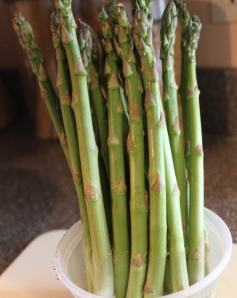Growing Herbs – Great For Your Garden…And Your Kitchen!
13
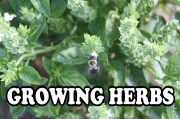 The varieties are endless. Basil, Cilantro, Thyme, Dill, Oregano, Chives, Mint and oh so many more. Herbs are some of the easiest and low maintenance plants to grow, and can be tucked in almost anywhere. It’s a shame that more often than not, they take a back seat to more familiar food crops such as peppers, tomatoes, corn and beans in the backyard garden plan. Especially when you consider they bring loads of taste and flavor to the dinner table. Herbs are the ultimate dual use plant – providing for great culinary use in the kitchen, while adding visual and aromatic appeal to your landscape, garden, patio or porch area.
The varieties are endless. Basil, Cilantro, Thyme, Dill, Oregano, Chives, Mint and oh so many more. Herbs are some of the easiest and low maintenance plants to grow, and can be tucked in almost anywhere. It’s a shame that more often than not, they take a back seat to more familiar food crops such as peppers, tomatoes, corn and beans in the backyard garden plan. Especially when you consider they bring loads of taste and flavor to the dinner table. Herbs are the ultimate dual use plant – providing for great culinary use in the kitchen, while adding visual and aromatic appeal to your landscape, garden, patio or porch area.
Although they flourish when planted in a garden or flowerbed setting – almost all herbs can be grown in pots and containers as well. The key with working herbs into your landscape is to think outside the “box” to add extra interest – like adding mint to a hanging baskets as a trailing accent plant – not only will it look beautiful, but it can make your porch or patio come alive with its wonderful scent.
And as an added benefit, many herbs can be successfully potted up and grown through the cold winter months in a sunny windowsill, providing a little extra “freshness” to your winter cooking.
A final note on using herbs in the kitchen – it may sound a bit odd, but remember when using in a recipe – you need to increase the amount of fresh herbs to equal the same effect if you used traditional dried varieties. Why? Dried herbs have much more concentrated flavors, and therefore you need less of them. There is no perfect ratio, but most cooks will tell you a 2:1 or 3:1 ratio is best. The trade off for using fresh – the flavors are more pure and true.
Although there are endless varieties available, here are 6 of our favorite herbs that are easy to get started, and serve many uses in our kitchen and landscape.
Cilantro / Coriander
If you love salsa and want to make your own – cilantro is the choice for you. Many think that cilantro and coriander are two separate plants – when in fact – they come from the very same plant and produce two separate and distinct flavors. Cilantro and Coriander are one in the same. The fresh young tender leaves are the unique spicy taste we know as cilantro in salsa, and the mature seeds that develop on older plants are the spice you know as Coriander. Cilantro will grow best in the cooler temperatures of spring and fall, so sewing seeds both early and late in the year is a good idea. Cilantro is one of those plants that do well in pots and planters. Once the hot heat of summer comes, the plants will bolt and go to seed, and now you have coriander. Consider this one the 2 for 1 herb.
Basil
There is nothing in the world that can compare to the taste of sweet basil! We use generous amounts when we make our home-made pasta and pizza sauce, and it is one of the 3 key ingredients in our favorite summertime appetizer – Basil, mozzarella and tomato slices. If you have never tried this – make this the year you do! Basil is extremely easy to grow, and will continue to grow throughout the summer. Our basil grew out of control last season, and actually re-seeded itself for a tender fall crop as well. It is considered an annual in our zone – but we rarely have to purchase seeds, because of its ability to re-seed itself each year.
Oregano
This is another must have if you are a lover of fresh pasta sauce! Oregano is a perennial that comes back year after year with its distinct and fresh tasting leaves. Although there are many types of oregano, we are partial to both the Italian and Greek varieties, using them to flavor our pasta and pizza sauces. They dry extremely well, and are perfect to make your own home-made Italian seasoning – using equal parts of dried parsley, oregano, basil, thyme and rosemary. It is actually one herb that a lot of cooks will prefer using dried as opposed to fresh, as the flavor seems to change for the better in the drying process.
Chives
Chives are one of the tiniest members of the onion family, and their use dates back to ancient Chinese times, where it was used for both medicinal and culinary purposes.
Chives are another perennial that will do just as well in the soil of a garden as it will in a pot on your back porch. Their uses are many, but probably best known for chopping up and sprinkling on baked potatoes. They also add a great onion flavor to soups and dry rubs. Chives can be placed with their stems and blooms in tact in a container of olive oil, to flavor it with a hint of aromatic flavor.
You can split, divide and transplant chives much like ornamental grasses. You can also dig up a small piece and bring indoors in a sunny location to enjoy fresh chives through the winter.
Mints.
There are a vast array of mint types available – peppermint, spearmint, chocolate and more! They are fantastic to use as garnish or the main ingredient in your favorite teas or mixed drink – like a mint julip, mojito, or a soothing peppermint tea to name a few. As an added benefit, they fill the surrounding air with their amazing fragrant scents.
A word of caution with mint however. They are best planted in pots – even of you plant in the garden. Mints can be invasive and once they become established – their underground roots can travel far and long and become difficult to remove. So keeping them in pots is the key. They are a perennial, and will come back each year with little trouble.
Dill
If you want to make your own pickles – then growing dill is a must! Fresh dill is easy to grow, and can become a focal point in the garden with its tall, fern-like, aromatic spikes. It is one of the taller herbs you will find – growing to heights of 2 to 3 feet depending on the variety. As dill matures, it is usually best to drive a small stake in the ground for support. The foliage and flowers are wonderful to use in all kinds of recipes from deviled eggs, to soups and of course pickles! As the plant matures, you also can harvest dill seeds as well. Dill is a great choice to use in large planters as a tall accent plant – it’s a creative switch to use in place of the old standards like traditional spikes. They are an annual as well, although much like basil, if you have them in a garden or flowerbed setting, they more than likely will re-seed themselves each year. Dill is best planted by seed directly in the ground, as it does not transplant well.
So this year, as you get ready to put out all of those fresh vegetable plants in your garden – throw in some herbs in the plan as well – and increase your gardening and kitchen horizons!
Happy Gardening! Jim and Mary

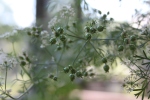





.jpg)
.jpg)

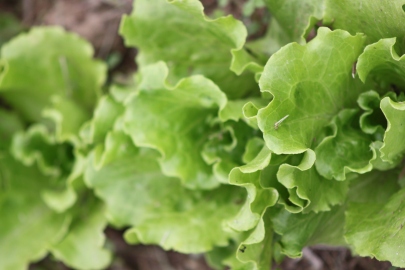





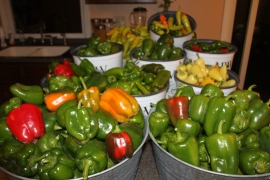




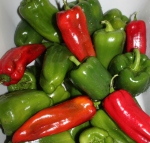






.JPG)

